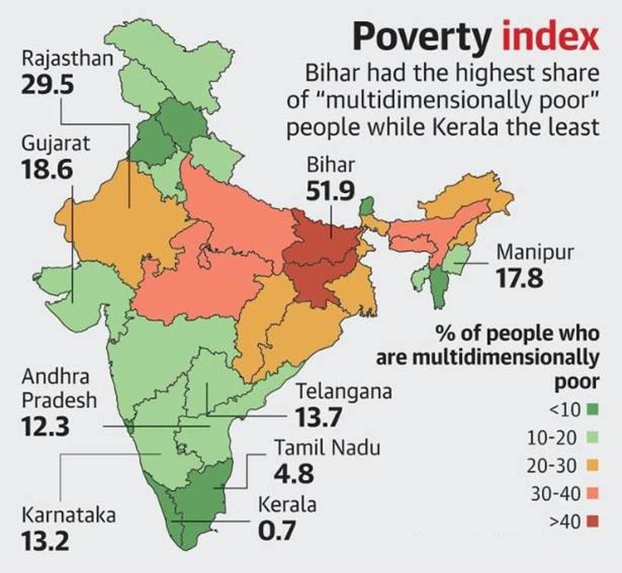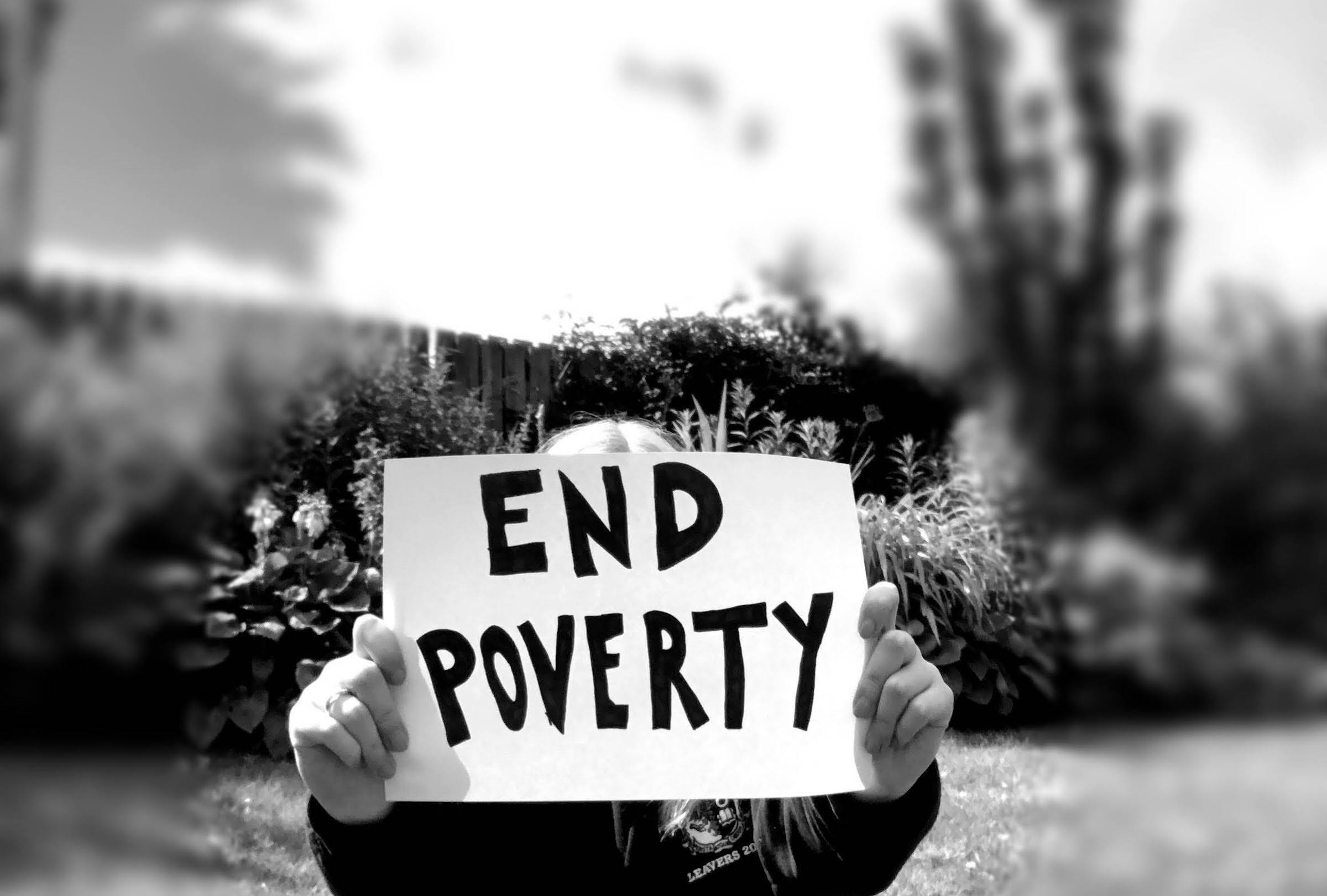Context:
The International Day for the Eradication of Poverty is observed annually on October 17 to raise awareness about the millions of people worldwide living in poverty. This day serves as a platform to recognize ongoing efforts across various sectors aimed at eliminating poverty globally.
- Poverty is a complex and multidimensional challenge that goes beyond mere economic deprivation. Those affected by poverty often endure overlapping struggles, such as inadequate housing, lack of access to justice, and insufficient nutritious food. Thus, addressing poverty requires a holistic approach that considers these intertwined issues.
- The theme for 2024 is "Eliminating social and institutional abuses, working together for a just, peaceful, and inclusive society." This theme emphasizes the need to address the social and institutional factors that perpetuate poverty and injustice.
Historical Context:
- The origins of this day date back to 1987, when more than 100,000 people gathered at the Trocadero in Paris to commemorate victims of poverty, hunger, violence, and fear. This gathering culminated in a statement from Joseph Wresinski, founder of the international movement ATD Fourth World, who unveiled a monument declaring that poverty is a violation of human rights.
- In 1992, the United Nations General Assembly officially designated October 17 as the International Day for the Eradication of Poverty through resolution 47/196. The Assembly invited all countries to dedicate this day, tailored to their national context, to presenting and promoting concrete activities aimed at eradicating poverty and deprivation.
The Growing Challenge of Poverty:
The significance of the International Day for the Eradication of Poverty has heightened in light of the increasing global poverty rates. Key statistics illustrate the magnitude of the challenge:
- According to the World Bank, over 712 million people, or about 9% of the global population, live in extreme poverty, surviving on less than $2.15 a day.
- Reports from the Borgen Project indicate that around 22,000 children die daily due to poverty, with one billion children living in extreme poverty.
- Bangladesh, China, the Democratic Republic of Congo, India, and Nigeria account for three-fifths of the world’s extreme poor.
- The COVID-19 pandemic has exacerbated these challenges, undoing years of progress, with 23 million people becoming poorer than in 2019.
- Stark inequalities persist, as only 12% of the world’s population uses 85% of the Earth’s water.
In response to the financial crisis triggered by rising living costs, 105 countries and territories announced nearly 350 social protection measures between February 2022 and February 2023, as reported by the United Nations.
Status of Poverty in India:
Poverty remains a significant issue in India, affecting millions and hindering the country's overall development. Recent reports have highlighted both progress in reducing poverty and the persistent challenges that remain.
Multidimensional Poverty Index (MPI) Findings
According to the Global MPI 2023, approximately 135.5 million individuals in India managed to escape multidimensional poverty between 2015-16 and 2019-21. This remarkable progress reflects a substantial decrease in the incidence of poverty, from 24.85% to 14.96%. However, as per the MPI report by NITI Aayog in 2021, India's national MPI score stands at 0.066, indicating that 25.01% of the population is still classified as multidimensionally poor.

Understanding the Poverty Line:
The poverty line is defined as the minimum expenditure or income required to afford a basket of goods and services necessary to meet basic human needs. In India, poverty line estimation relies on consumption expenditure due to the challenges of accurately assessing incomes, especially in the rural and informal sectors.
Historical Overview of Poverty Estimation in India
1. Alagh Committee (1979): This committee constructed separate poverty lines for rural and urban areas, focusing on nutritional requirements. They recommended 2,400 calories for rural areas and 2,100 calories for urban areas, with corresponding monthly expenditures of Rs 49.1 and Rs 56.7, respectively.
2. Lakdawala Committee (1993): It suggested calculating consumption expenditure based on calorie consumption and emphasized constructing state-specific poverty lines, updated using relevant consumer price indices.
3. Tendulkar Committee (2005): Established by the Planning Commission, this committee reassessed poverty estimation methods. According to its report, the rural poverty headcount ratio for 2004-05 was 41.8%, while urban poverty stood at 25.7%, with an overall pan-India poverty rate of 37.2%.
4. Rangarajan Committee (2012): Chaired by former RBI governor C. Rangarajan, it reviewed poverty measurement methodologies and defined poverty as living on less than Rs 47 per day in urban areas and Rs 32 in rural areas. It estimated poverty levels to be 19% higher in rural areas and 41% higher in urban areas compared to the Tendulkar Committee's figures.
The Need for a New Official Poverty Line:
There are several compelling reasons for establishing a new official poverty line in India:
1. Outdated Data: The Tendulkar Committee's estimates are nearly two decades old, leading to significant underestimation of poverty levels.
2. Inconsistent Global Data: The World Bank reported an increase of 56 million poor people in India in 2020, attributing this rise to the pandemic. In contrast, the Pew Research Institute indicated an increase of 75 million poor individuals and a reduction in the middle class by 32 million. However, India has not acknowledged this increase in poverty.
3. Less Realistic Data: Current poverty estimation does not reflect regional disparities as it employs a pan-India level threshold, ignoring the social and economic conditions unique to different states.
4. Accuracy Issues: A lack of comprehensive data on consumption and inflation hampers accurate poverty assessments. Additionally, the Multidimensional Poverty Index (MDPI), which evaluates factors like health and education, relies more on survey data rather than actual consumption metrics.
5. Institutional Challenges: India's statistical system, once lauded globally, has faced criticism for its inefficiency in providing empirical data. For example, the Consumption Expenditure Survey 2017-18 was so poorly received that the government withdrew its findings.
Conclusion:
The International Day for the Eradication of Poverty is an important reminder of the ongoing global and national challenges in addressing poverty. As the world continues to grapple with these challenges, the 2024 theme serves as a call to work together toward creating a just, peaceful, and inclusive society. In India, despite notable progress, the need for updated poverty measurements and a more comprehensive approach to eradicating poverty remains critical for future progress.
|
Probable questions for UPSC Mains exam: The Multidimensional Poverty Index (MPI) has highlighted significant progress in poverty reduction in India. However, regional disparities persist. Discuss the factors responsible for these disparities and propose solutions to ensure equitable poverty eradication across the country. |







